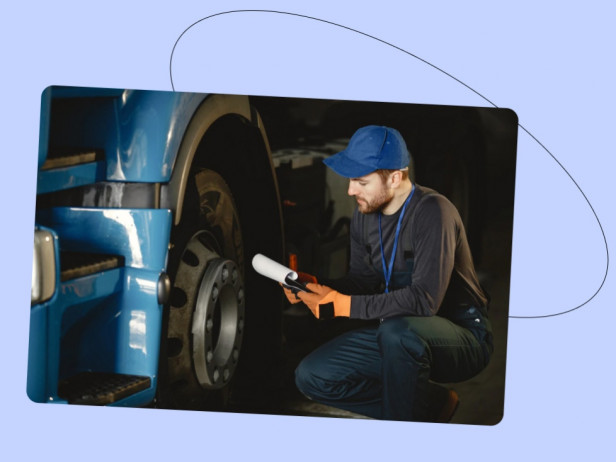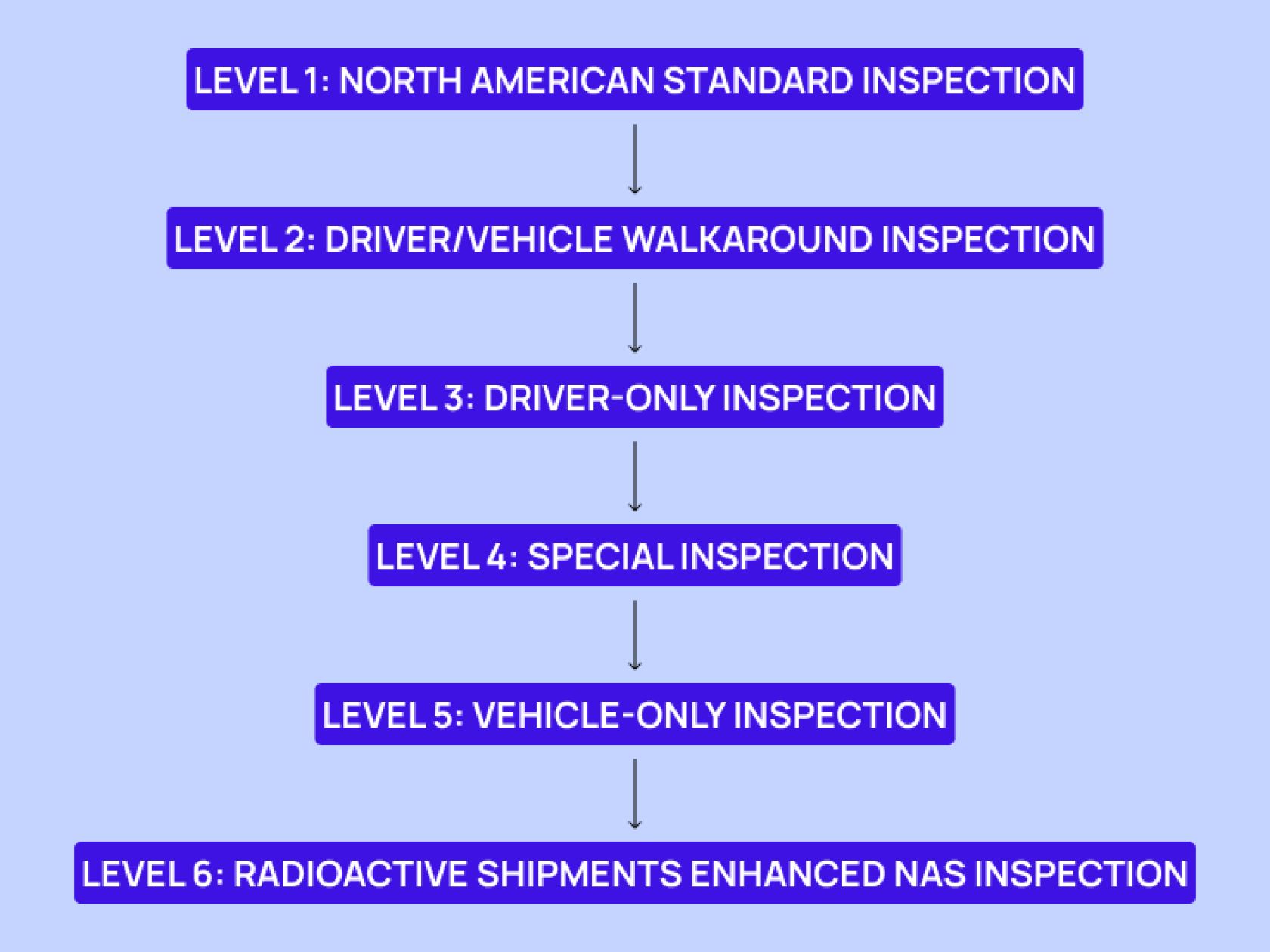What is a DOT Inspection?
Roadside inspections by the Department of Transportation (DOT) are a series of examinations that determine if commercial motor vehicles are in excellent operating condition.
These DOT truck inspections are a preventative strategy to increase the safety of both drivers and passengers on the road. To assist prevent accidents, they make sure that commercial vehicles are following all rules and regulations.
A lot of drivers and truckers dread DOT roadside inspections. The fact that these tests can be administered at any time, any place, and without prior notice contributes to their unfavourable reputation. You also run the danger of failing the inspection if you are unprepared.
Who is Involved in the Examination of Trucks?
Other groups and organizations participate in these safety inspections, which are carried out by each state's DOT.
To guarantee that carriers and drivers obey CMV laws and regulations, the following organizations collaborate:
- State police: Each state has a specific cadre of cops called state troopers who are also authorized to conduct inspections.
- Federal Motor Carrier Safety Administration (FMCSA): A division within the DOT that manages and finances all inspections.
- The Alliance for Commercial Vehicle Safety (CVSA): A non-profit that developed the standards for the CMV inspections program's North American Standard Inspection program.
Why is it Important to Pass the Inspection?
Commercial motor vehicles (CMV) that weigh more than 10,000 pounds must go through a DOT inspection once every 12 months. This examination will make sure that all components are secure and functional.
Failure to pass inspection may result in penalties, audits, and the FMCSA (the Federal Motor Carrier Safety Administration), which is governed by the DOT, suspending your ability to operate.
Main Stages of the DOT Inspection
The six DOT inspection levels are as follows:
Level 1: North American Standard Inspection
The most frequent and thorough DOT inspections are Level 1 inspections. During these checks, the DOT inspector examines crucial papers like:
- The commercial driver's license (CDL) of the vehicle's driver.
- The doctor's note attesting that the operator passed their yearly DOT physical examination.
- The latest eight on-duty days' worth of logbook entries, which detail hours worked.
- A medical card or waiver.
Additionally, the inspector will look for any indications of drug or alcohol abuse.
Last but not least, the expert performing the examination will also check the seat belt, fuel system, steering wheel, wheels and rims, exhaust system, turn signals, tail lamps, and headlamps.
It normally takes 45 to 60 minutes to complete a Level 1 examination.

Level 2: Driver/Vehicle Walkaround Inspection
The sections of the Level 1 inspection that require the inspector to get under the vehicle are the only ones that are not examined during Level II inspections. This covers the records examined during Level 1 inspections.
It takes roughly 30 minutes to perform the Level II inspection.
To be in compliance with DOT requirements, drivers should regularly inspect the vehicle before and after operating it, according to DOT driver vehicle inspection checklists.
A pre-trip inspection DOT-compliant checklist can be used by drivers to document their findings in order to help them satisfy DOT criteria.
Level 3: Driver-Only Inspection
The inspector will carefully examine the credentials of the vehicle operator during this inspection. The skill performance evaluation (SPC) certificate, driver's license, medical clearance, a record of duty status (RODs), and seat belt use are all inspected in drivers. The inspector will also look over any driver-signed vehicle inspection reports.
Inspections at Level III typically take 15 minutes to complete.
Level 4: Special Inspection
One-time inspections that focus on a single item are considered Level IV inspections. They are often scheduled to confirm or refute a previous car claim.
A Level 4 examination will take a different amount of time depending on the situation.
Level 5: Vehicle-Only Inspection
Inspections at Level 5 take a close look at everything described at Level 1. The absence of the driver is the only distinction between them. This examination includes testing the brakes, steering, springs, and electrical cables of the car.
The length of a Level 5 inspection is up to 45 minutes.
Level 6: Radioactive Shipments Enhanced NAS Inspection
These shipments of radioactive materials are subject to this scrutiny. Only certain radiological shipments that meet the requirements of DOT's title 49 section 173.403 for highway route-controlled quantities.
Before leaving, the cargo, drivers, and vehicles must all pass this inspection. Normally, the Level 6 inspection takes up to 60 minutes to complete.
Once finished, the CMV will have a unique nuclear symbol added to it to show that a Level 6 inspection was successfully completed. This nuclear sign is only good for one journey and will be taken off when you get there.
Tips to Pass the DOT Inspection
Review the following details before sending in your yearly DOT inspection. Knowing what to anticipate will improve your chances of passing the inspection with few problems.
- Make Documentation
The examination of your necessary papers is just as crucial as the visual examination of your car. Ensure you have the documents required by the FMCSA, including insurance proof, accident logs, driver licenses, results of drug and alcohol tests, results of road tests, training records, and more.
- Train and Prepare Employees and Drivers
By educating your drivers, you may assist your business in getting ready for a DOT inspection. Take a proactive stance and establish an internal educational program rather than taking the chance that certain inspection components will slip through the cracks. You won't be reliant on a single person to keep up the necessary compliance and safety practices that you need to pass your yearly DOT inspections if requirements are routinely communicated throughout the firm.
- Preserve the Vehicle and the Records of Repairs
As anticipated, maintaining the condition of your vehicles will play a significant role in passing your annual DOT inspection. You must present documents of repairs made to your trucks to demonstrate that you have kept up with maintenance. Throughout the year, make sure to get in touch with mechanics to inquire about the condition of trucks, parts, machinery, and significant accessories. In order for inspectors to rapidly confirm that any necessary repairs from earlier inspections have been maintained and that you've done your due diligence, this includes making sure that any records of repair are readily available to them.
- Employ Checklists
Having an up-to-date checklist system in place is the finest and most effective approach to guarantee that you are sufficiently prepared for your yearly DOT inspection. Keep a running record of everything you need to do, including all required reporting, to pass inspection every year. Aim to be more prepared than necessary by being aware of the requirements that apply to you, a checklist should include:
- Walk-around inspections
- Engine compartment
- Lights and signals
- Brake system
- Cab interior
- Coupling system
- Trailer
- Tires and tire pressure
- Driver documentation
The annual DOT inspection may seem like a bother as the deadline draws near, but it is essential to keeping your legal standing. Additionally, it guarantees that you are working as a truck driver or fleet owner in a safe manner. A healthy and efficient business depends on staying informed on inspection requirements and changes to DOT or FMCSA regulations.





